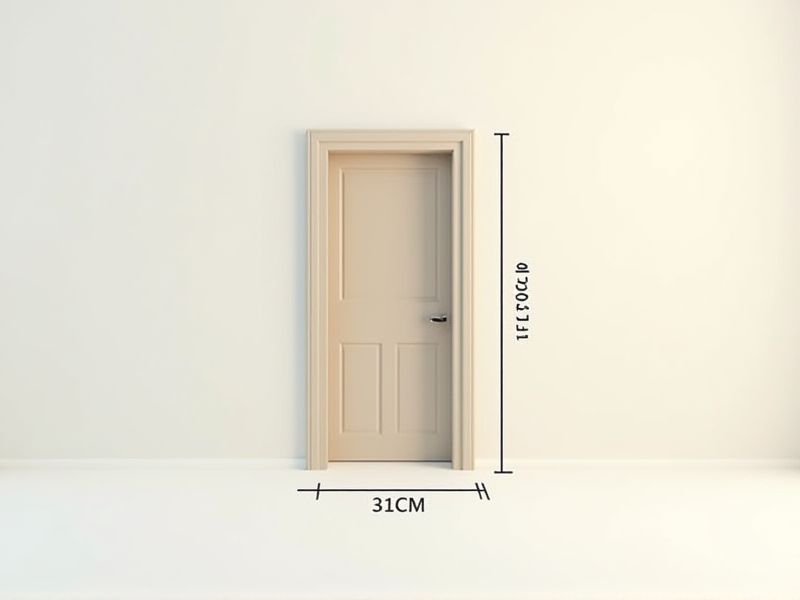
When considering a home elevator, it's helpful to know that standard dimensions typically range from 3 feet by 4 feet (36 inches by 48 inches) to 3 feet by 5 feet (36 inches by 60 inches) for the cab interior. These sizes allow enough space for one to three people, or a wheelchair, to comfortably fit inside. The minimum required hoistway (shaft) is usually slightly larger--around 4 feet by 4 feet--to accommodate the elevator car and its equipment. Always consult local building codes and a qualified elevator installer to ensure the size and installation meet safety standards and personal accessibility needs.
Minimum Cabin Size
The standard minimum cabin size for residential elevators is typically around 36 inches wide by 48 inches deep, ensuring adequate space for mobility and accessibility. In many regions, building codes may require a 1,400-pound weight capacity to accommodate individuals, wheelchair users, and heavy equipment. Your home elevator should also comply with safety features, including door sensors and emergency communication systems, which enhance user security. With proper installation, a residential elevator can increase property value and provide convenience for all family members, particularly seniors and those with mobility impairments.
Door Width
The standard door width for residential elevators typically ranges from 32 to 36 inches, providing adequate space for wheelchair access and convenience. Ensuring that the door width complies with the Americans with Disabilities Act (ADA) guidelines is crucial, as it promotes inclusivity and safety for all users. Your home elevator's design should also consider the surrounding wall space, allowing for easy maneuverability when entering or exiting the elevator. Choosing the right door width not only enhances accessibility but also increases the overall functionality of your home elevator system.
Shaft Dimensions
Home elevator standards emphasize specific shaft dimensions to ensure safety and functionality. Generally, a minimum shaft width of 3 feet (36 inches) and a height of at least 8 feet (96 inches) are recommended for most residential elevators. These dimensions accommodate the mechanics of the elevator system and provide comfortable space for users. You should consult local building codes, as they may have specific requirements that could vary based on your region.
Overhead Clearance
Home elevators must comply with specific standards for overhead clearance, which typically require a minimum of 7 feet above the elevator car. This measurement ensures sufficient space to accommodate both the elevator and any necessary safety mechanisms. In homes with multiple floors, planning your elevator's installation should reflect these clearance requirements to avoid potential hazards. To optimize your space, consult local building codes for precise height specifications that align with your design aspirations.
Pit Depth
The standard pit depth for home elevators typically ranges from 4 inches to 6 inches, depending on the model and design. A deeper pit allows for smoother operation and better clearance for the elevator car, enhancing both safety and accessibility. Compliance with local building codes may necessitate specific pit depth requirements, potentially affecting your installation choices. When considering a home elevator, it's vital to consult with a certified professional to ensure your pit depth meets all relevant standards.
Weight Capacity
Home elevators typically have a weight capacity ranging from 500 to 1,500 pounds, allowing for the transport of multiple passengers or heavy items. It's crucial to select an elevator that meets the needs of your household, especially if you anticipate moving large items or ensuring accessibility for those with mobility challenges. Most models are designed to withstand rigorous use and have safety features that prevent overload situations. Consider the dimensions of the elevator cabin as well, as these can impact both weight capacity and user experience.
Speed Limits
Home elevators typically adhere to speed limits ranging from 30 to 50 feet per minute, ensuring safe and comfortable travel between floors. This standardized speed allows for smooth operation while accommodating the average height of residential buildings, which often spans two to three stories. Safety features, including emergency brakes and sensors, are designed to engage if the elevator exceeds these limits. By selecting an elevator that complies with these standards, you enhance your home's accessibility without compromising on safety.
Number Of Stops
Home elevators typically feature a standard design that accommodates up to five stops, ensuring efficient movement across multiple levels in your residence. This configuration often covers a vertical rise of up to 50 feet, catering to both single-family homes and multi-story buildings. Each stop allows for seamless access to various floors, enhancing accessibility for all users, particularly those with mobility challenges. Choosing an elevator with the right number of stops can significantly improve your home's functionality and convenience.
Energy Efficiency
Home elevators are increasingly designed with energy efficiency as a primary standard, using advanced technologies to minimize electricity consumption. Modern systems often incorporate regenerative drives that capture excess energy during descent, potentially reducing energy costs by up to 30%. Many units also utilize LED lighting and standby modes, allowing them to draw minimal power when not in use. Investing in an energy-efficient home elevator can not only enhance your property's value but also contribute significantly to sustainability efforts by lowering your carbon footprint.
Compliance With Safety Standards
Home elevators must comply with the latest safety standards, like the ASME A17.1/CSA B44 code, ensuring user protection and reliability. Regular inspections, ideally every six months, are crucial to maintain safety and functionality in line with industry regulations. Your home elevator should also include features such as emergency stop buttons, door sensors, and backup power systems to enhance safety during operation. Installing a certified elevator can significantly improve accessibility, adding value to your home and ensuring compliance with local building codes.
